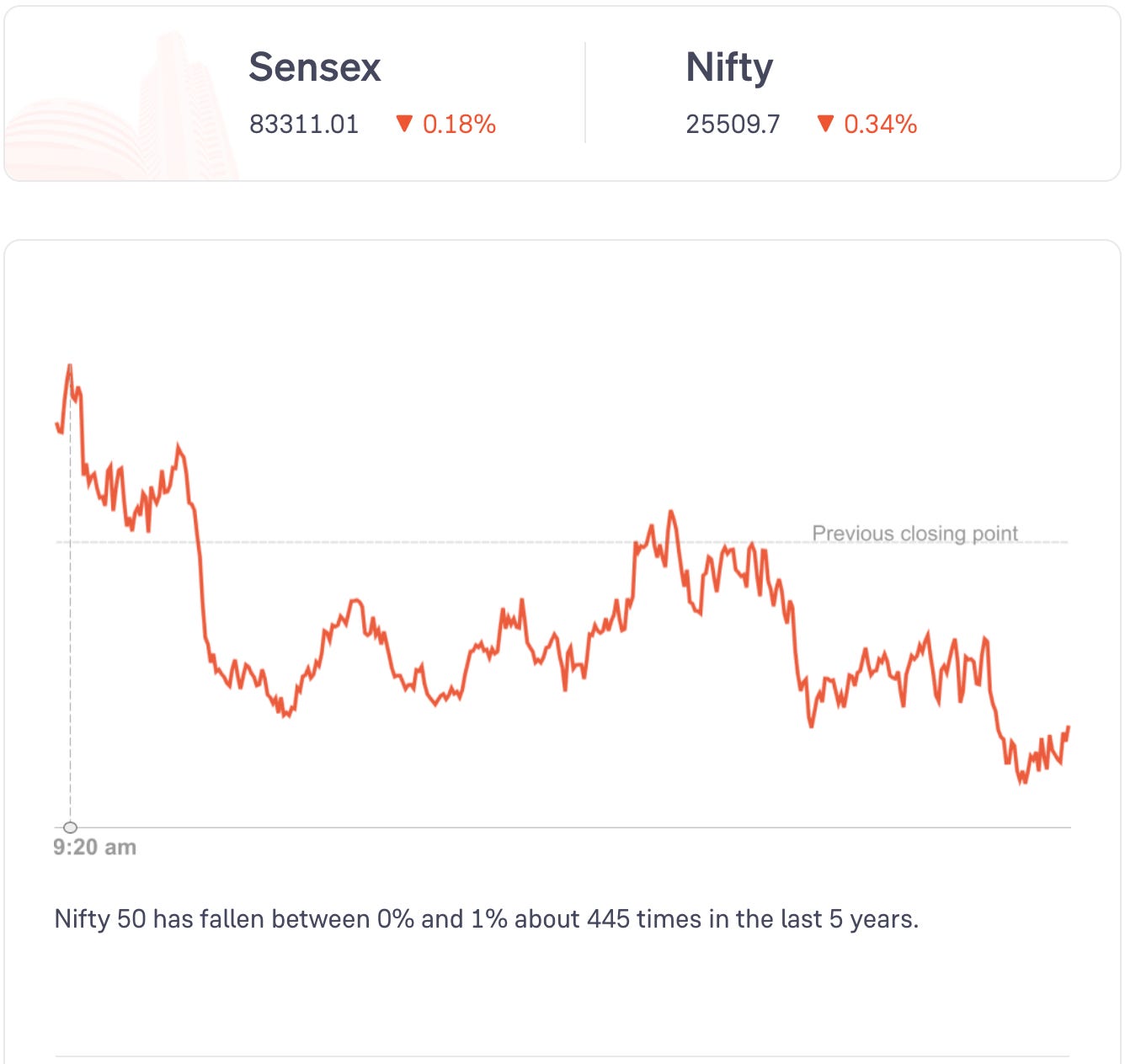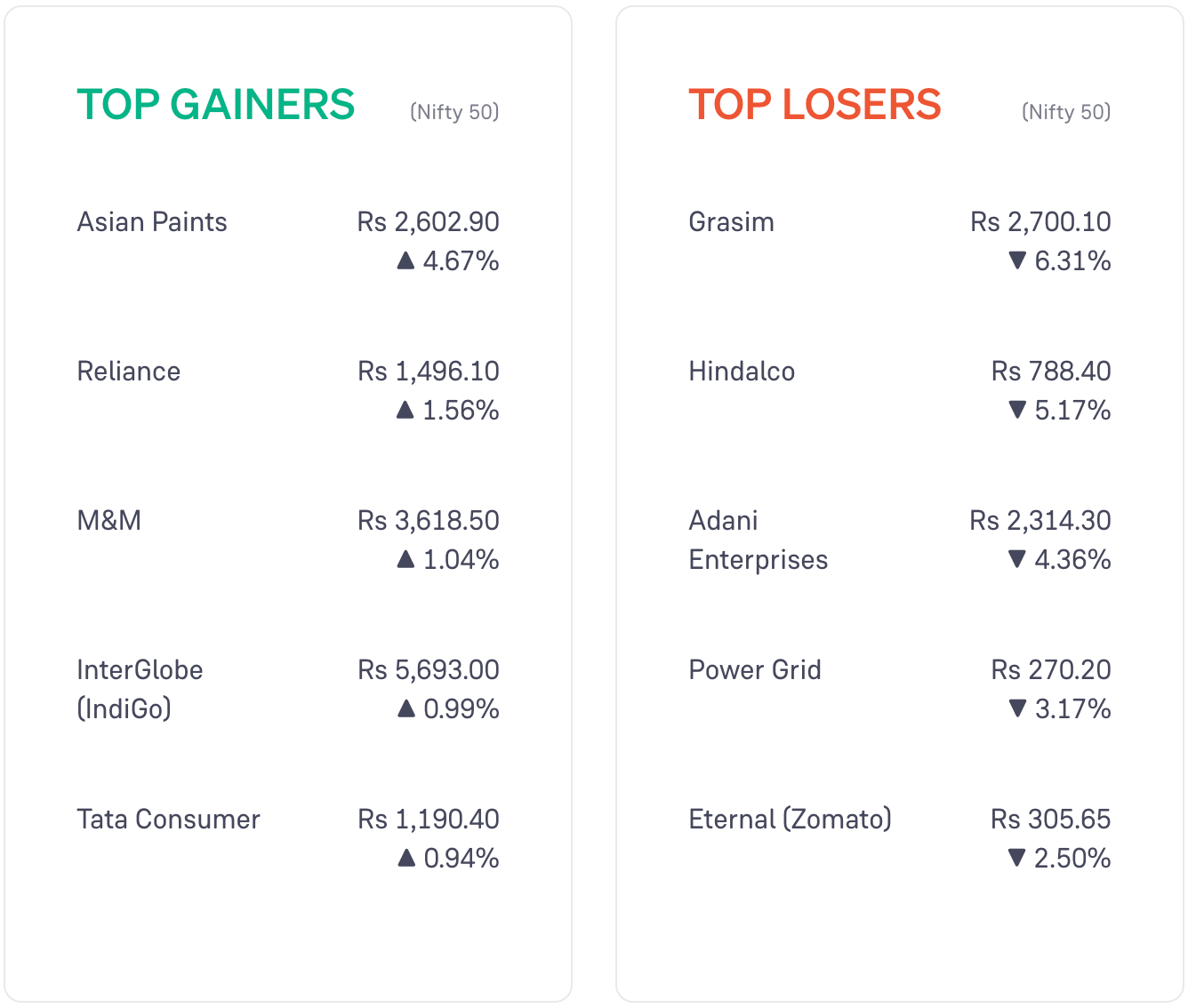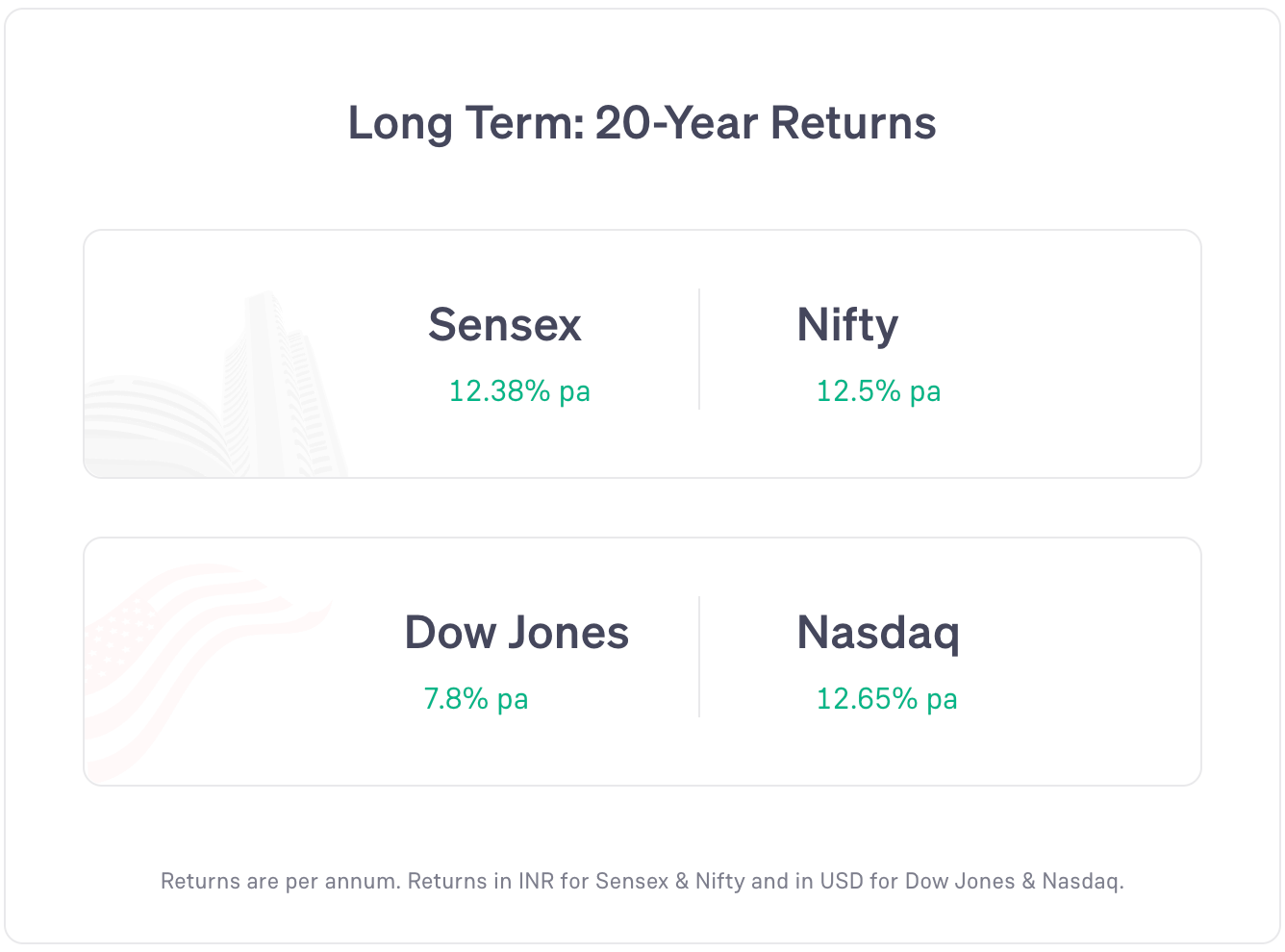Starlink in Maharashtra, LIC profits up 31%, composite PMI falls in Oct, & more - Groww Digest
Thursday, 6 November 2025
Markets opened above Tuesday’s closing point.
Nifty 50 fell throughout the day and closed in the red.
All sectors’ stocks fell today except for the IT stocks and auto stocks. Media stocks and metal stocks fell the most.
Global markets: US markets and most Asian markets rose. Most European markets fell (as of 6 pm IST).
News
The Maharashtra government signed a Letter of Intent with Starlink to deploy satellite-based internet services across rural and remote regions.
India’s composite PMI (manufacturing + services) fell to 60.4 in Oct (vs 61 in Sept). Services PMI fell to 58.9 (vs 60.9 in Sept). This means that business activity grew less in Oct than in Sept.
SEBI has increased the quota for anchor investors in IPOs from 33% to 40%. Of this, 33% will be reserved for mutual funds and 7% for insurers and pension funds. SEBI also raised the limit for the number of anchor investors for IPOs with an anchor portion above Rs 250 crore: up from 10 to 15 per Rs 250 crore.
Orkla IPO was listed on the stock exchanges at a premium of 2.75% over the issue price and closed 2.24% down at the end of the day.
Note: we will not be covering any news related to the Groww IPO till the listing date (12 Nov) due to legal/conflict-of-interest reasons#
Stocks Updates
SBI: board approved plans to divest a 6.3% stake in SBI Funds Management (SBIFML) via IPO by 2026. It will also have a 3.7% stake sale by Amundi India Holding. Presently, SBI and Amundi hold 61.91% and 36.36% stake in SBIFML respectively.
LIC: net profit rose 31% year-on-year to Rs 10,098 crore in the July-Sept quarter. Net premium income rose 5% to Rs 1.27 lakh crore.
Cholamandalam Investment: net profit rose 20% year-on-year to Rs 1,160 crore in the July-Sept quarter.
ABB India: net profit fell 7% year-on-year to Rs 409 crore in the July-Sept quarter.
Zydus Lifesciences: net profit rose 38% year-on-year to Rs 1,259 crore in the July-Sept quarter. The board also approved raising up to Rs 5,000 crore via a Qualified Institutional Placement (QIP). It also received USFDA Orphan Drug Designation for ‘Desidustat’ drug.
Mankind Pharma: net profit fell 22% year-on-year to Rs 512 crore in the July-Sept quarter.
Bajaj Housing Finance: net profit rose 18% year-on-year to Rs 643 crore in the July-Sept quarter.
NHPC: net profit rose 13% year-on-year to Rs 1,021 crore in the July-Sept quarter.
Word of the Day
Anchor Investor
They are large, reputed investors who invest in an IPO before it opens to the public
They buy shares at a fixed price within the IPO’s price range and are required to make a minimum investment of Rs 10 crore.
They cannot sell these shares immediately. They must hold them for a certain period of time (usually 30 to 90 days).
Anchor investors can include mutual funds, foreign portfolio investors, insurance companies, pension funds, etc.
Their early investment helps build trust and confidence in the IPO and encourages more people to invest when it eventually opens.
6 Day Course
Theme: credit interest cycles
Day 4: Thursday
Interest rate cycles are usually said to have 4 phases.
- Easing phase: a period when interest rates are being reduced from a higher level
- Low rate period: a period when the interest rates are kept low and fixed
- Tightening phase: a period when interest rates are being increased
- High rate period: a period when the interest rates are kept high and fixed
All these 4 phases combined are referred to as the interest rate cycle.
Many observers like to believe interest rate cycles usually follow a 7-8 year period.
But this is not true. There have been many interest rate cycles that have been shorter and longer than that.
Sometimes, the interest rate cycle is broken — rates might be reduced further even after being kept low or vice versa.
This depends entirely on the economic condition.
Example: interest rates were lowered further when the pandemic struck in 2020. This came despite many years of low interest rates.
Featured Question
“how index percentage changes work over multiple days. If an index gains 1% on Day 1 and Day 2, and then loses 1% on Day 3 — is that loss calculated on the larger base created by the previous gains? Also, if the index gains 1% for 4 days and then drops 5% on Day 5, does that mean the index could end up below its original starting point?”
Excellent question.
Many investors do not fully understand this. It is also a reason why some very big investing mistakes are made.
When you hear about markets going down or up, it is usually compared to the start of the day or the previous day.
“Sensex is up 1.4%”
This means, it is up 1.4% since morning.
“Nifty closed up 1.8%”.
This means it is up 1.8% compared to the morning (when the markets opened).
A day of “Markets are up 5%” followed by another day of “markets are down 5%” does not mean the markets are back to the same place!
Let’s say Sensex was at 1,000.
From here, it fell 5%. So now it is at 950.
The next day, it rose 5%. Which means it is now at 997.5 (5% of 950).
It is not back to the same level.
Say you own a share and its price falls 10% in a day. The next day, it goes up by 10%.
You are still not even. It is still at a loss.
This is the default way of writing about the markets and stocks.
The exception to this is when it is specifically mentioned.
Example: “XYZ stock fell by 20% over the last 5 months”.
This clearly means that a stock’s price fell 20% over a period of 5 months and not in 1 day.
Here, the starting price is the price 5 months ago and the ending price is the current price
Did you like this edition?
Leave a feedback here!





